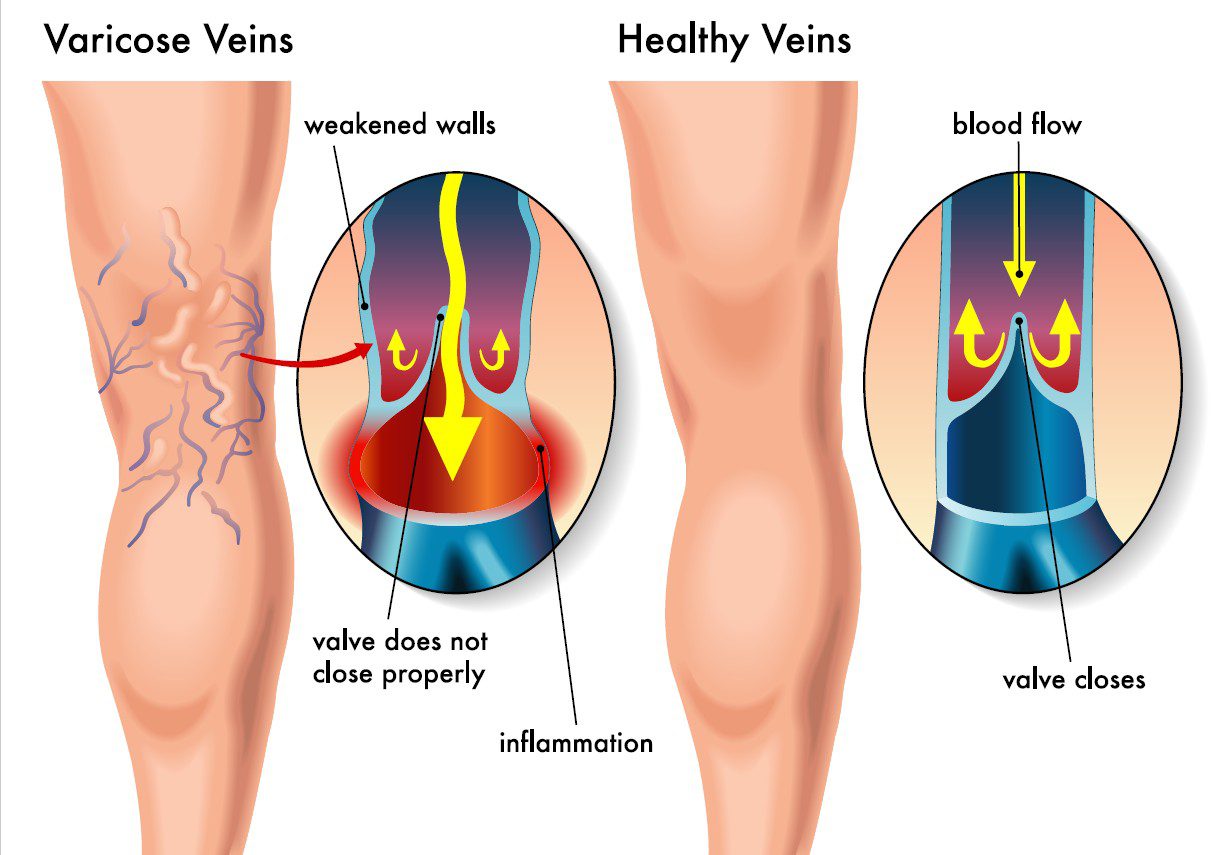

The human circulatory system is a marvel of biological engineering, with veins playing a crucial role in maintaining overall health. Veins carry deoxygenated blood back to the heart, working against gravity and relying on a complex system of valves and muscle contractions to function properly. Understanding venous health is essential for everyone, impacting our daily lives and long-term well-being.
Veins are blood vessels that transport blood from various body parts to the heart. Unlike arteries, which have thick, muscular walls to handle blood pressure from the heart, veins have thinner walls and contain valves to prevent blood from flowing backward.
Venous valves are small, one-way flaps that open to allow blood to flow toward the heart and close to prevent backflow. They are crucial for maintaining proper blood circulation, especially in the legs, where blood must flow against gravity.
Several conditions can affect venous health, ranging from minor cosmetic issues to more serious medical concerns. Some of the most common venous disorders include:
Varicose veins are enlarged, twisted veins that often appear on the legs and feet. They occur when the valves in the veins become weak or damaged, allowing blood to pool and cause the veins to swell. While often considered a cosmetic issue, varicose veins can sometimes cause discomfort and lead to more serious problems if left untreated.
Spider veins are smaller, thread-like veins that appear close to the skin’s surface. They are typically red, blue, or purple, often resembling a spider’s web or tree branches. While generally harmless, some people may seek treatment for cosmetic reasons.
DVT is a serious condition characterized by the formation of blood clots in deep veins, usually in the legs. These clots can be dangerous if they break loose and travel to the lungs, causing a pulmonary embolism. DVT risk factors include prolonged immobility, certain medical conditions, and genetic predisposition.
Recognizing the symptoms of venous disorders is crucial for early detection and treatment. Common symptoms include:
Suppose you experience persistent symptoms or are concerned about your venous health. In that case, it’s essential to consult with vein specialists in Utah or other qualified healthcare providers who can provide expert diagnosis and treatment options.
Accurate diagnosis is crucial for effective treatment of venous disorders. Healthcare providers use various methods to assess venous health and identify potential issues:
Duplex ultrasound is a non-invasive imaging technique that combines traditional ultrasound with Doppler ultrasound. This method allows healthcare providers to visualize the structure of veins and assess blood flow, making it an invaluable tool in diagnosing venous disorders.
Treatment for venous disorders varies depending on the specific condition and its severity. Options range from conservative measures to more advanced medical procedures:
Sclerotherapy is a popular treatment for small to medium-sized varicose veins and spider veins. The procedure involves injecting a solution directly into the affected veins, causing them to collapse and eventually fade away. Multiple sessions may be required for optimal results.
While some risk factors for venous disorders are beyond our control, there are several steps we can take to promote venous health and reduce the likelihood of developing problems:
Regular exercise, particularly activities that engage the calf muscles, can significantly improve venous health. Walking, swimming, and cycling are excellent low-impact options that promote blood circulation and strengthen the muscles that support healthy vein function.
Maintaining good venous health is not just about preventing visible veins or avoiding discomfort; it’s an essential component of overall cardiovascular health and general well-being. Healthy veins contribute to:
Certain populations may be at higher risk for venous disorders and require special attention to maintain venous health:
Pregnancy can significantly impact venous health due to hormonal changes and increased blood volume. Pregnant women are at higher risk for developing varicose veins and should take extra precautions, such as:
As medical technology advances, new treatments and diagnostic tools for venous disorders continue to emerge. Some promising developments include:
Understanding and maintaining venous health is crucial for overall well-being and quality of life. By recognizing the signs of venous disorders, seeking timely medical attention, and adopting healthy lifestyle habits, we can promote optimal venous function and prevent many common vein-related issues. Early intervention is key, and consulting healthcare professionals when concerns arise can lead to better outcomes and improved long-term health.
Upgrading your workspace? Get inspired by design ideas for materials, lighting, and amenities, and tips…
In recent years, the global interest in peptides has surged due to their wide-ranging benefits…
Maximize your workspace without overspending. Explore practical ways to expand your office using smart layouts,…
Discover how to create a thriving STEM community through hands-on, collaborative projects that are perfect…
Understanding the common causes of delays during facility relocations can save you time, money, and…
If you or someone you know suffers from sleep apnea, chances are a CPAP (Continuous…